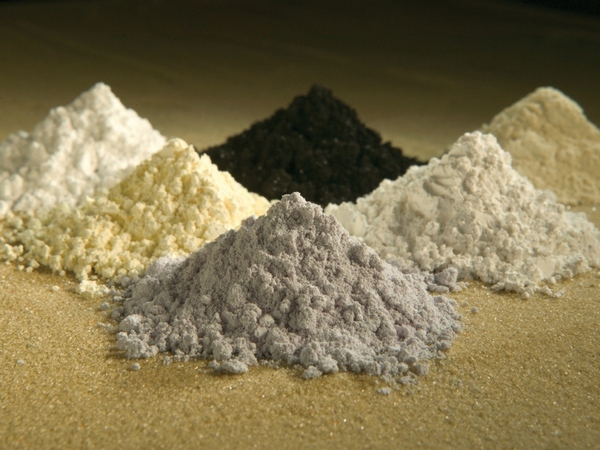Lanthanum, cerium, praseodymium, neodymium. These are just the first of seventeen ‘rare-earth elements' in the periodic table of elements. They are called rare-earth, but they are in fact all metals, similarly coloured and indispensable for our present and future economy, for the ecological transition of numerous countries.
Rare-earth elements are part of a larger group of 'rare materials' or 'critical materials' such as nickel or cobalt, which are the basis of the latest electronic devices (rechargeable batteries, electric motors, TV and LCD screens, and more). They are also key to the development of the most advanced technologies in aerospace, medicine, defence, and renewable energy. Their demand is set to grow rapidly worldwide, and their export is currently lead by China.
Strategies and regulations to overcome the Chinese monopoly and regulate the complex and unsustainable process of extracting and processing rare-earth elements and critical materials are being discussed at the level of the European Union and individual states. In Italy, the Ministry of Enterprises and Made in Italy and the Ministry for the Environment are involved in the debate.
Stefano Bonetti, Professor of Experimental Condensed Matter Physics at Ca' Foscari, represents Rara Foundation ETS, a young non-profit organisation set up to promote and carry out research into sustainable technologies and materials, offering 'clean' and viable solutions in geopolitical strategies related to rare materials. Co-founders are Ca’ Foscari’s Guido Caldarelli, Professor of Theoretical Physics, and Michele Bugliesi, Professor of Computer Science and former Rector, together with Alberto Baban, President of VeNetWork Former President of Small and Medium Businesses and Vice-President, General Confederation of Italian Industry, and Anna Soatto, Lawyer and Partner of Cortellazzo&Soatto.
Bonetti was recently invited for a hearing at the Foreign Affairs Commission of the Chamber of Deputies, where he explained the critical issues and possible developments in the field of rare-earth elements and materials, and presented the Foundation's activities.
'We are currently developing and patenting an algorithm aimed at replacing rare-earth elements with sustainable and abundant materials by searching and combining materials with similar properties,' Bonetti explains. – Truth is that there is no clean way to extract rare-earth elements, and that processes to avoid pollution require costly clean-up processes which, in turn, would increase prices of materials and drive rare-earth elements extracted in Europe out of the market. Let us also consider the social cost: any electronic device in everyday use has a battery that contains cobalt, and cobalt mining takes place almost entirely in the Congo, where the lack of environmental regulations and the tragic exploitation of child labour is in plain sight. The paradox is obvious: to make an ecological transition that aims to save the planet, we procure materials by destroying certain areas of the planet itself, and the people who live there. Even the current alternatives under discussion, i.e. recovering and recycling rare-earth elements from old electronic devices, or finding new deposits, still have very high energy, environmental and social costs'.
This initiative offers a completely new solution to the problem. The idea is not to find rare-earth elements or materials by recycling them or searching for new deposits, but to replace them completely with abundant and sustainable materials.
'There are elements such as sodium, potassium, iron, titanium, and several others, which are much more abundant, and distributed all over the planet,' says Bonetti. - With these common elements, we can create composite materials – alloys – having the properties of rare-earth elements. In this way, we could still develop the technology required for an ecological transition, while using materials with a low environmental impact. And not only this: these materials are distributed all over the planet, therefore potentially weakening the concentration of power in the hands of a few players and the resulting threats to human rights.
The idea is simple: to try many combinations of materials, test them and find the ones that are similar. The difficulty lies in the huge number of possible combinations, which is comparable to that of atoms in the universe.
'At Rara Foundation we were able to use our unique mix of expertise (in the fields of physics of matter, theoretical physics and computer science) to develop an algorithm that can optimise the search for these materials with unprecedented efficiency. After the algorithm, the next goal is to create a database of materials that could replace rare-earth elements.'
Such an undertaking is bound to have a strong impact on the entire national system. From the economic point of view, Italy would become a leader in sustainable materials for new technologies (the estimated value of the microelectronics sector alone is 700 billion in 2027). In strategic and geopolitical terms, Italy would become a point of reference for industries operating in the field of ecological transition. Finally, there would be the political impact, as we could take the lead in Europe in policies for sustainable materials.
During the hearing at the Chamber of Deputies, the Rara Foundation presented some short- to medium-term recommendations, including: for politicians to commit at the international level to make research into sustainable materials a priority in the coming years, for Europe to allocate funds towards substituting critical materials with sustainable materials, and for National Recovery and Resilience Plan funds to be employed for research into sustainable materials.










